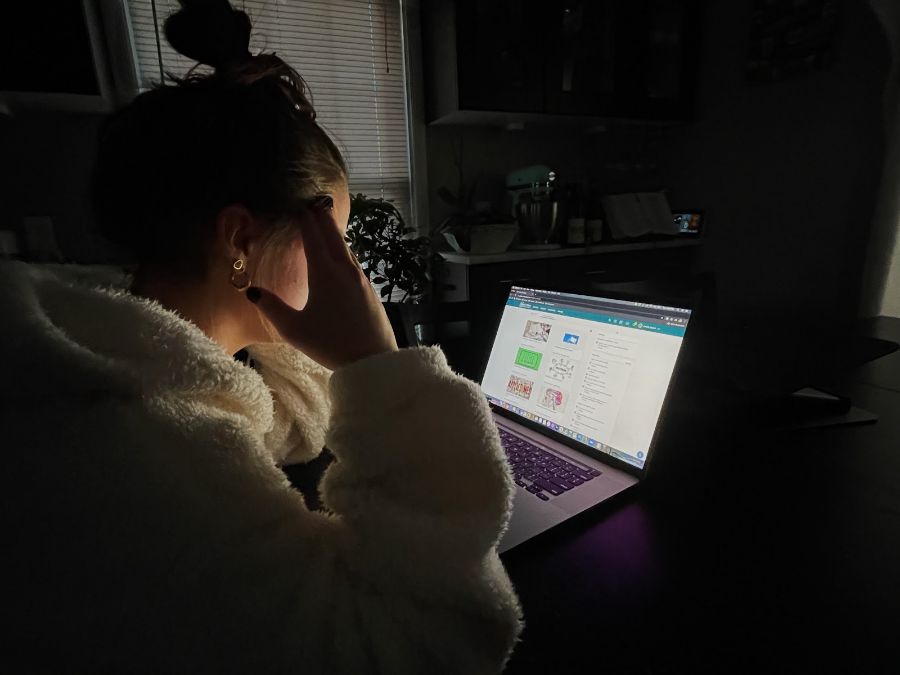Overwhelmed students and faculty seek solutions
Photo credit: Michael Hartt
Senior Amelia Schock has been feeling overwhelmed since she started online school in the fall. “Staring at the computer and the (fact that the) asynchronous work is all on the computer too (is a lot),” Schock said. “I just feel very trapped and its like we always have something to do so it stresses me out a lot.”
November 17, 2020
Senior Amelia Schock says that the online school format implemented at the start of the school year has caused her to be more overwhelmed with class work than ever before. An overabundance of what Schock describes as useless asynchronous work and the process of adapting to a new learning environment are just a few of the problems she mentioned.
“The teachers seem to give a lot of busy work for asynchronous work and it is very disorganized a lot of the time, so I don’t really know what is expected of me,” Schock said.
The new online learning format used by all high school students throughout the district consists of two weekly 50 minute periods for each of a student’s seven classes, one optional learning lab where students can further develop the skills they learned that week and student support opportunities for students to speak with teachers one-on-one.
The biggest problems Behavior Interventionist Lauren Klein sees amongst students as they are adapting to schedule’s structure are related to time management.
“Students are being tasked with managing their school day more than any student has ever been asked to do that before. (This) takes a whole set of skills that is probably brand new for people in high school,” Klein said. “Time management, discipline, focus and prioritizing (are key), and you learn these things well into being an adult typically. So we are asking students to do that and that is really hard.”
Although Klein recognizes that there are flaws in the current learning platform, she thinks that it also is a huge improvement from the structure used in the spring.
“(Students) are more engaged now,” Klein said. “I think that the live time with the teachers is a big change and the fact that there are multiple times of support structurally in place now is really, really helpful for them.”
Several studies have recently shown that the online school environment also contributes to poor mental health among students. A recent study published in the Journal of the American Medical Association showed that students who were subjected to an entirely online learning environment were more than twice as likely to attempt suicide as students taught in person.
Schock said she has noticed her mental health decline as a result of the online learning environment. Although she says it has not deteriorated extremely, it is noticeable. She says that sessions with her therapist now consist of conversations about how to manage the stress.
Head counselor Jennifer Sherman recognizes the mental health issues occurring amongst students, and she said she is working on solutions that are expected to be rolled out within the next few weeks.
Math teacher Nicole Sturgeon is also concerned about her students’ mental health, but says that it is important to not forget the impacts of this learning environment on teachers.
“The overwhelming piece (that teachers are experiencing) is coming from teachers (thinking), ‘I know this isn’t the best I can do,’” Sturgeon said.
Sturgeon does believe that both students and faculty can eventually flourish in this environment, but thinks that there needs to be a change in attitude towards the situation first.
“Online learning works really well when it is done really well,” Sturgeon said. “It can be but it has to be something that both sides buy into, and I don’t know if all students have bought into it and I know that not all teachers have bought into it.”












